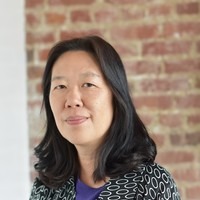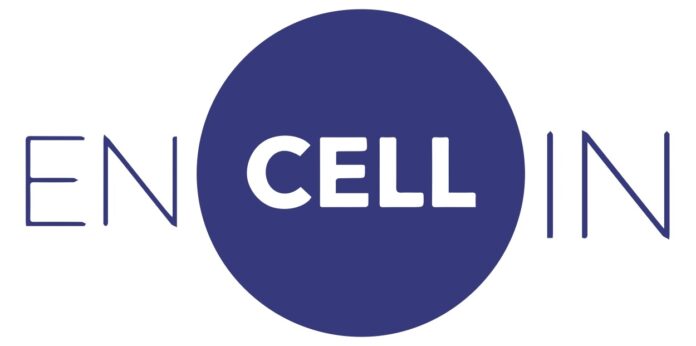This article is a follow-up on the article: Encellin – a biotech company to help patients with Type 1 Diabetes
How did you start setting up Encellin? When was the first idea born? What was the original purpose?
Encellin was born from the vision of using cells as the ultimate smart machines to treat diseases. The goal is to provide a platform that would harness the power of cells to produce therapies when needed, at the dose needed. Think of Encellin as creating a new category of therapies where we can use cells as molecular factories to produce a variety of drugs for patients when needed, at the appropriate dose.
How did you meet the other founder?
Crystal: I was very lucky to meet Grace when I was doing my PhD at UCSF. We were connected through the Director of the Diabetes Center when I was looking to test our preliminary ideas on a variety of cell types. After I graduated, we lost touch, but ran into each other again when I organized an Innovation Summit. Now I don’t remember too much about the summit, but I remember our conversation in the back of the room distinctly. After sharing that I was planning on spinning out the company, she asked very simply, “Do you need any help?” and the rest is history. Ever since that conversation we have been working together on Encellin.
When did you first become interested in science and decided to be a scientist?
Grace: I think being interested in science and doing science are distinct. Pretty much everyone is interested in the questions that science can answer: why can’t dogs eat chocolate, why is the sky orange sometimes, why am I sick?
I’m a biologist now, but I never actually took biology in high school and loathed my first semester of biology in university. At that point, I enjoyed the other sciences, but they didn’t really call to me. Everything changed in the second half of that first year. The professor for that intro to molecular biology class was a legend at McGill. He introduced all the great discoveries by sharing something of the personal character of the scientists together with the logic, and really the beauty, of the experiments. That insight into the humanity and practise of science was very inspiring. It is still inspiring.

Crystal: I was always fascinated by science, and the chemistry that controls our natural world. There was never one singular moment that determined the fate of going into science but a growing appreciate for the wonder of our world and the bonds that hold it together. Moreover, I loved the opportunity to dedicate my life and my career towards helping advance technologies and therapies that could benefit millions of people.

Please tell a bit about the company culture and your daily life at the company.
At Encellin, our culture is guided by our three values:
1) integrity – do the right thing. We are going to be treating humans, and we need to make sure we are always thinking about the safety and responsibilities associated of having a therapy for humans.
2) Passion – care deeply. At Encellin we care deeply: we care about our team, we care about the science, we care about the work, we care about the patients, and we care about doing the right thing.
3) Courage to be the change. We are doing something new, different and frankly audacious, and we need to be courageous as we are trying something new.
The day-to-day activity is a slightly different in times of COVID-19 but not as much as you would expect. We have a close-knit team, and our day-to-day activities focus on making sure we are on target with our milestones and whatever responsibilities those entail.
Please present Encellin’s current aim and the company itself from your perspective?
Encellin is focused on advancing and investigating next generation cell-based therapies, with a starting focus on helping patients with high unmet clinical needs.
How do you differentiate yourself from other competitors in the biotech industry?
Encellin is a bit different than other companies in the diabetes space, and in general from biotech itself. We are a platform with a device component that will be generally regulated as a biologic. Our approach is to decouple the device risk from the biology risk and start by addressing them individually and then together. This is a bit different than the standard cell therapy or medical device companies in our space.
If you had to envision where Encellin stands in a few years, how would you imagine its purpose, core, and aims?
This is something we are constantly thinking about and discussing. At Encellin we care deeply about helping patients, and this motivation drives our purpose. We are always discussing how we can use our technology to help patients, and this conversation can take a number of shapes.
When and why did you decide to try to find a solution for specifically type 1 diabetes?
Diabetes is a debilitating disease, and what is even more intimidating than the constant barrage of glucose check and insulin injections is the ever-present fear of hypoglycemia (when your sugar goes dangerously low). We are choosing to address these patients with hypoglycemia first because they have the highest unmet clinical need.
How did you select team members?
We select our team based on two factors: general technical capabilities but most importantly character. We are very serious about our culture and do the majority of our selection based on value alignment.
What other illnesses may be addressed later? Please provide details, and why you think biotech may be the solution? Which illnesses could be treated by biotech solutions?
We are looking to address a variety of diseases where cells can provide the appropriate secreted small molecule, protein, peptide, etc. to address a disease state. This can cover a variety of endocrine based diseases or hormone-based diseases. In these diseases a patient is missing a specific function of a cell and with our cell encapsulation technology can return that missing cell or function.
Also, with the current treatment option, there is a risk of fibrosis. Why and how does it happen? How many people are affected?
Fibrosis can be a risk for implants that are not well tolerated in the body because they either provide continuing injury to the implant site (and are fibrotically encapsulated) or they illicit an immune response. Our implant does not illicit a foreign body encapsulation or fibrosis but instead undergoes normal healing response. This allows the cells to be well connected to the host.
Why are you using nano-porous materials? Why is the material specifically important?
We are using porous material to control the exchange between the cells and the implant environment. Having the ability to control the permeability provides a unique ability to filter what types of molecules and amount of molecules can communicate between the cells and the implant environment or more global host.
What is the exact process, and where are you currently? How have animal studies succeeded so far?
We are using a proprietary process that enables us to have precise control over the device permeability.
Our animal data is all very encouraging, and we are planning to publish our results soon. We believe in being active participants in the community and believe that together we can help advance the field towards better therapies for patients.
When could tests begin on humans?
We are looking to initiate our first in-human trials by 2022.
What are Encellin’s current challenges regarding this specific treatment? (development, funding, safety, etc.) How are you planning to tackle these issues?
We are focused on execution and building a safe and efficacious therapy for humans. To help tackle that goal, we are building a team of experts who care deeply about helping patients and advancing the field. We are surrounding the team with people who can help us succeed.
When do you foresee this solution to be available on the market?
We are looking to complete our first in human by 2022 and market the product as soon as we get approved.
How big is the market potential?
Our initial target market is focused on Type 1 Diabetes, which is a multi-billion-dollar market. But this is only one of the markets we are approaching, and really only a starting point for Encellin’s potential market.
How many people could potentially be treated?
Some reports say that 5% of the global population has Type 1 Diabetes (some say a bit higher), but again thinking that Diabetes is only a starting point we are looking to address a broad variety of chronic disease which are reported to affect approximately 40% of the global population.
Which countries are going to have access to your solution in the first stage of commercialization around the world? Where could this treatment be potentially used?
We are aiming to commercialize this product globally.
Are large scale production and administration difficult? How are you planning to reach out to global markets?
We are still working through these efforts and strategies and will either build or partner to help get our product to the patients that need it.
How did you feel when you won the 2017 HealthTech Award? What were the implications of this success?
This was a big moment for Encellin as a company. The HealthTech award really commemorates our transition from an academic mindset to business. You need both the business and the science to work to be able to get our product to where it can help patients.
How affordable could the treatment be?
will work with providers to help this product get to the patients that need it, and are will work through strategies for patients in need to have access to the therapies they need.
What kind of company culture do you envision for the future?
Even as we grow and evolve as a company, we will always be anchored to our values. Encellin is a company that cares deeply about helping patients, doing the right thing, and being bold in our pursuits of advancing medicine.



